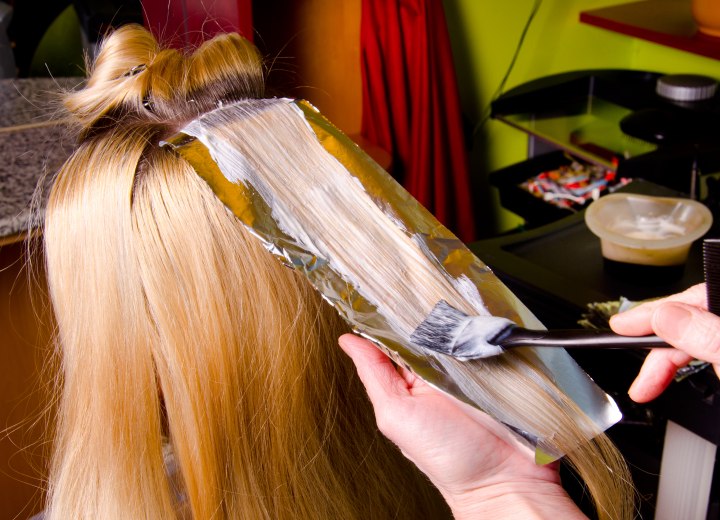How to Redo Highlights

A: Redoing highlights requires careful approach and patience to achieve professional-looking results while maintaining the hair's health. The key is targeting only the new growth area while avoiding the previously lightened sections to prevent over-processing and potential damage.
When mixing your lightening product, consider using a slightly lower volume developer than you used initially, especially if the hair has been chemically processed multiple times. A 20-volume developer is often sufficient for touch-ups, whereas you might have used 30-volume for the original highlights. This gentler approach helps minimize damage while still achieving the lift you need.
If you're feeling overwhelmed by the foil method, a frosting cap can work as an alternative, though it does come with some drawbacks. You'll need to carefully pull the previously highlighted strands through the cap holes, which can be time-consuming and sometimes difficult, especially if the hair has grown significantly or if you're working with thicker hair. The cap method also makes it harder to control exactly where you're applying the lightener, increasing the risk of overlap.
For those seeking a quicker approach, you might consider spot-touching only the most visible areas. Focus on the top layers of hair and around the face, where new growth is most noticeable. Use a small color brush to carefully paint lightener onto just the root area of selected strands. While this method won't give you the coverage of a full retouch, it can buy you time between full highlight sessions and is less likely to cause damage since you're working with smaller sections.
Timing is crucial regardless of which method you choose. New growth typically processes faster since it's closer to the heat of your scalp, so check your progress every 10-15 minutes. Don't leave the lightener on longer than necessary. It's better to do two gentler applications if needed rather than risk over-processing in one session.
After completing your highlights retouch, always follow up with a toning process if needed. Sometimes new growth can pull differently than it did originally, resulting in slightly different undertones. A toner can help blend the new highlights seamlessly with the existing ones, creating a more cohesive overall look.
If you're unsure about the process or if the hair looks unhealthy, don't hesitate to consult with a professional hair colorist. They can assess your hair's condition and recommend the best approach for your specific situation, potentially saving you from costly mistakes or hair damage that could take months to repair.
©Hairfinder.com
See also:
What are highlights?
How long will it take for highlights to fade?